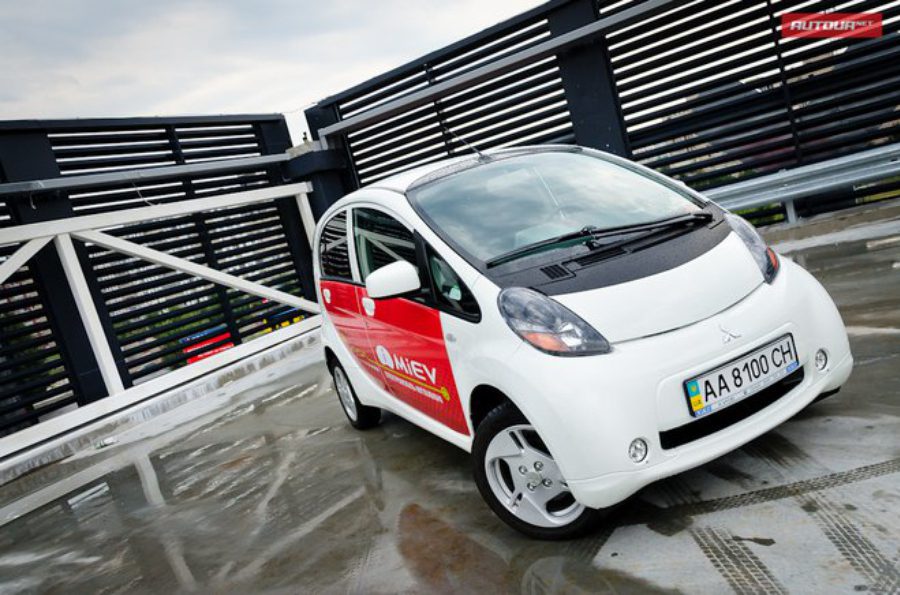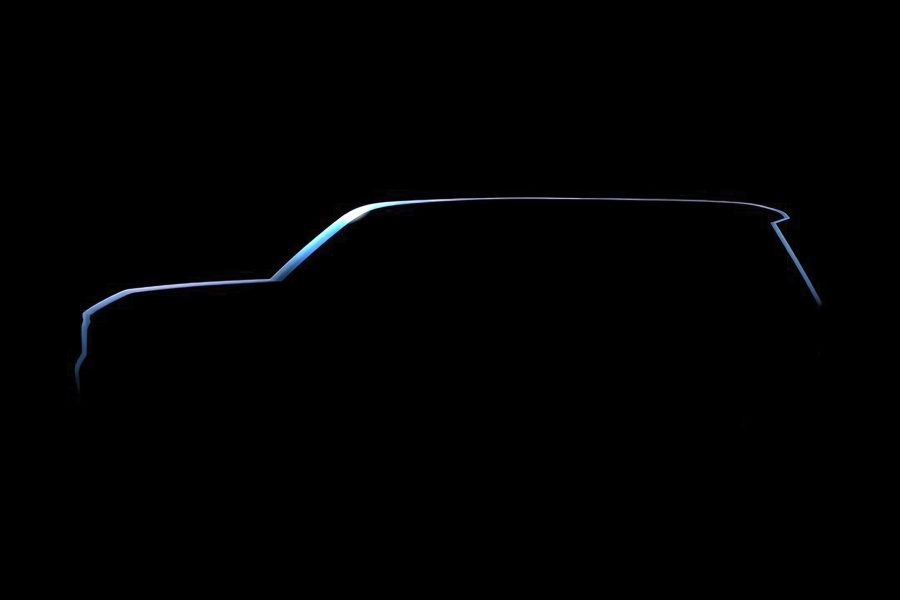
Test: Mitsubishi i-MiEV
All indications are that the future of electric BO is here. Opel Ampera and Chevrolet Volt, Toyota Prius Plug-in, i-MiEV trio, C-Zero and i-On, not least Tomos E-lite and many other cars with a battery instead of a fluid tank and an electric motor instead of internal combustion engines - too obvious harbingers that something is going on in this area.
Only the biggest skeptics claim that there is still enough oil to drain batteries too quickly and that they are too expensive - and they are right, but still: in some circumstances, an electric car is a good choice. That (useful) business sedans like the all-electric Audi A8 and BMW 7 Series are not to be expected anytime soon is probably already true, but what about the city?
Take, for example, our photographer Sasho: at home he is about 10 km from the editorial office; the house has a garage and a socket in it, in the editorial office there is a garage with a socket. The range of XNUMX km for such an occasion is more than satisfactory! And let you know - I know a family from the Gorensky district who has been driving electric cars for many years. Let's leave that for now - let's move on to the i-MiEV, which was waiting for me in our basement garage.
The first five minutes were spent looking for a wonderful combination of the position of the gear lever and the turn of the ignition key. Nothing complicated, but if you don't know... The lever must be in position P, after which the ignition key must be turned, as in a conventional car; including "verglanje". Then the “ready” light on the armature lights up simultaneously with a slight beep, and the car is “ready to go” *. Inside, despite the small external dimensions, it does not give a feeling of tightness, but in the door drawers the wallet is cramped. whatever you can fit in there.
It's no secret that when creating the car, we tried to save as many kilograms, decagrams and grams as possible: the plastic on the door is thin and soft, the switches seem to be next to washing powder, and we got the feeling of a box in front of the gear lever. already a slight kick knocked him out of the starting position. The driving position is not even wrong, and from the seats, as you probably already know, you should not expect excessive lumbar and lateral support. Meow is not meant for business trips in Europe, but for jumping from Bumpy to BTC and then to Vich, maybe even to Brezovica and back home through the center. Example.
The Ljubljana-Shenchur-Ljubljana route with several additional tasks here and there already turns out to be problematic. And not for comfort, but for the range of the electric motor. On a cold Friday morning, the on-board computer promised a 21-kilometer range, after which, after a 24,4-kilometer journey with the air conditioning turned off and its own muttering, instead of the Val 202, there were still seven kilometers of "fuel" left. at the finish line.
If the gas supply is gentle, and if we cool off with the "Bosnian" climate, the data on the maximum mileage of the car is quite real. The largest number on the screen was 144 kilometers after overnight charging (the plant claims 150 kilometers), and electricity consumers connected to the maximum capacity can cut it in half in the blink of an eye! Those with smartphones use the QR code on the previous page for video verification. Fun fact: the driver's seat heats up because the driver heats up faster and uses less energy than if he was heating the entire cab.
Since the electricity in the battery is not even accidentally stored as fast as gasoline flows into the fuel tank, it takes time to recharge. Example: on a sunny Saturday at 14:52 I parked my car at Policharyev's farm (between Kran and Naklo), where they offer free charging of electric vehicles, since the roof of the cowshed, which makes excellent cheese, is covered. with solar panels. The turtle was already burning next to the appliances, so the i-Mjau was completely empty before charging. At 17:23 (after two and a half hours of walking along the Sava), the trip computer showed a range of only 46 kilometers. This is how it is in practice. Then you come to visit your grandparents, "fence" for renewal, they ask how much of this will be known on the counter, in the bill, and so on and so on. In a word, the driver of an electric car has to come to terms with some problems that consumers of petroleum products do not even dream of.
On the other hand, the performance and quietness in the passenger compartment is impressive. Important: keep in mind that pedestrians, cyclists and children on the streets cannot hear you! The response to a fully depressed pedal with a potentiometer (I think, but we certainly can't call it an accelerator pedal!) Is really inspiring. From the spot, Miau first wakes up more lazily, then pulls at a speed of about 30 kilometers per hour, so that the participants in the movement just look at what it feels like to one car without an exhaust pipe.
This high torque had to be transmitted to the wheels, just like on wheelbarrows, which felt in the rain, as the vehicle's very loud electronic stabilization system at the time often interfered with the transmission of power to the rear wheels. Without the standard ASC (Stability Control) and TCL (Vehicle Slip Control) systems, Mjau would be very dangerous in such conditions. One hundred and eighty electric Newton meters, not a bad ton of weight and rear-wheel drive ... If you are even interested in the maximum speed: on an airplane more than 136 kilometers per hour does not go and does not go.
It barely gets enough credit because Auto Shop's criteria apply to conventional vehicles, which today offer much more than the size and weight limited i-MiEV. For the same money, you can buy a Mitsubishi Outlander with a 2,2-liter turbodiesel engine, 177 horsepower, a six-speed transmission, all-wheel drive, automatic air conditioning, rain-sensing wipers, cruise control, bi-xenon headlights, a 710-watt amplifier and nine Are we clear enough? But hey - even the first embryonic cars were probably less practical and reliable than carriages.
With us so far only slowly
On the rear right side is an electrical outlet for charging from a 220V home network. Mitsubishi states that a discharged lithium-ion battery charges in six hours at 16 amps, in seven hours at 13 amps, and another hour at 10 amps. the car has another "hole" through which the batteries are charged in an accelerated manner. Thus, discharged batteries up to 80% capacity are charged in just half an hour. Unfortunately, according to the Slovenian Mitsubishi dealer, there is no such charging station in Slovenia yet.
Citroën and Peugeot don't have it
D: Normal operation, suitable for city driving.
B: In this position of the gear lever, we will feel more braking as the energy regeneration rate is the fastest. Suitable for descending Vršić or for more economical driving.
C: The regeneration rate is the lowest, as the motor slows down the least during this time. Then the trip will be the most comfortable.
text: Matevž Gribar, photo: Saša Kapetanovič
Matei Memedovich
To say that I was impressed is not enough. I was fascinated, especially by the road freeze, so to speak, driving at a lower speed. For that feeling, it's worth a try, I advise. The car itself has enough room for four passengers, without a lot of luggage, of course. Even small children in child seats did not have to kick the back of the front seat, it is so spacious. Well, and a little less in width, since you can reach the other side without stretching. Of course, the range of a car with a fully charged battery is small, but enough to drive it from the Kochevje region to Ljubljana. Let's say you use more electricity in the winter as the heating turns on and then you have to ask your boss if you can plug your car into a power outlet. Otherwise, you ask him when you need to charge your cell phone? 😉
Mitsubishi i-MiEV
Basic data
Technical information
| engine: | permanent magnet synchronous motor - rear mounted, center, transverse - maximum power 49 kW (64 hp) at 2.500-8.000 rpm - maximum torque 180 Nm at 0-2.000 rpm. Battery: lithium-ion batteries - nominal voltage 330 V - power 16 kW. |
|---|---|
| Energy transfer: | reduction gear - motorized rear wheels - front tires 145/65 / SR 15, rear 175/55 / SR 15 (Dunlop Ena Save 20/30) |
| Capacity: | top speed 130 km / h - acceleration 0-100 km / h 15,9 - range (NEDC) 150 km, CO2 emissions 0 g / km. |
| Transportation and suspension: | limousine - 5 doors, 4 seats - self-supporting body - front single wishbones, leaf springs, double wishbones, stabilizer - De Dionova rear axle, Panhard rod, coil springs, telescopic shock absorbers - front disc brakes (forced cooling), rear disc - raid circle 9 m |
| Mass: | empty vehicle 1.110 kg - permissible total weight 1.450 kg |
| External dimensions: | X x 3473 1608 1475 |
Our measurements
| T = 19 ° C / p = 1.020 mbar / rel. vl. = 41% / Mileage condition: 2.131 km | |
| Acceleration 0-100km: | 14,7s |
|---|---|
| 402m from the city: | 19,8 years ( 116 km / h) |
| Maximum speed: | 132km / h (D) |
| Braking distance at 100 km / h: | 40,9m |
| AM table: | 42m |
| Noise at 50 km / h in 3rd gear | 52dB |
| Noise at 90 km / h in 3rd gear | 62dB |
| Noise at 130 km / h in 3rd gear | 68dB |
| Idling noise: | 0dB |
We praise and reproach
capacity (especially in the city)
solid space in front and back
adroitness
fuel consumption savings
overall user experience
quiet ride
equipment (navigation, USB, bluetooth)
price
inconvenient operation of the touch screen
poor stability at high speeds
soundproofing of tracks
high barrel edge
range with included electricity consumers (heating, air conditioning)
loud operation of the stabilization system
cheap production (visible screws, lower quality plastic)
narrow drawers in the door
transparency back
